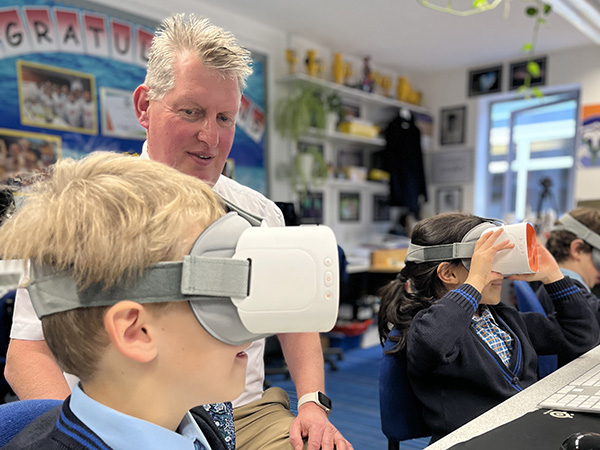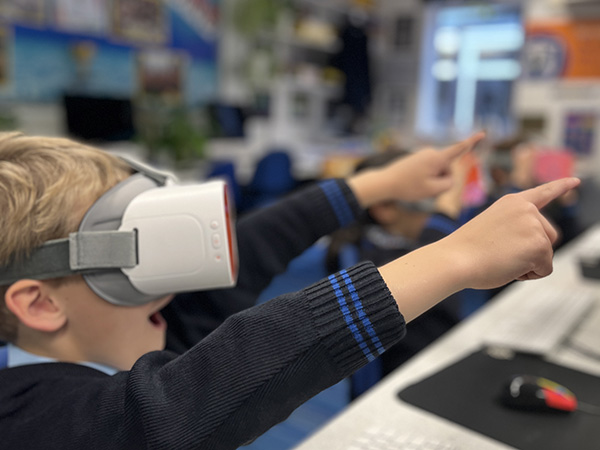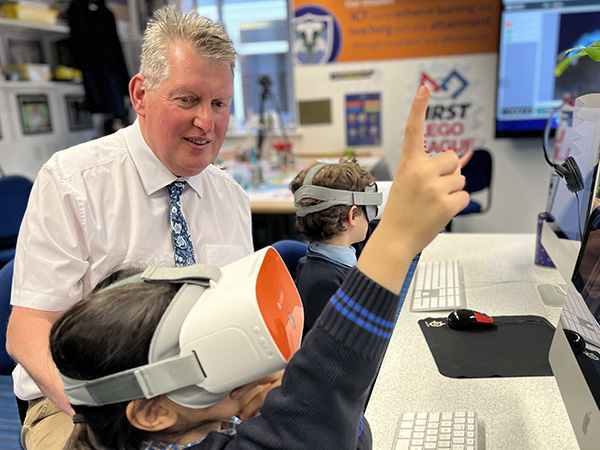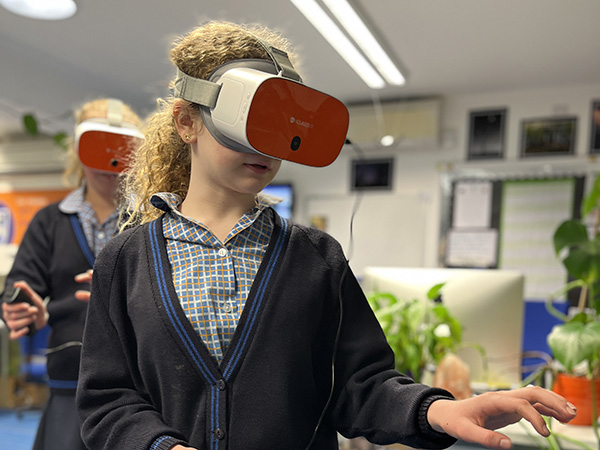Mr Callahan, Head of Computing, shares his insights into how Virtual Reality Headsets are transforming our pupils' experiences in the classroom.
‘What is it like to walk in someone else's shoes? Books allow us to imagine it, and movies allow us to see it, but Virtual Reality is the first medium that actually allows us to experience it.’ (Nick Mokey)
Virtual reality, or VR, is taking off in education with an increasing number of schools adopting this exciting technology. What is it and how can it be used in the classroom? VR allows pupils, via a headset, to experience destinations from across the world and beyond without ever having to leave the classroom. VR refers to interactive content (images or videos) which enables the viewer to explore the entire 360 degrees of a scene.

At St. Margaret’s Prep, we thought long and hard about how this immersive technology could benefit our pupils and enhance our curriculum. There is no sense or benefit in adopting the latest technology because it’s a buzzword or a trend. We considered whether this technology could enhance our offering of teaching and learning, whether it could connect our pupils with the wider world, and how it could help prepare them for the future. After much discussion, demonstrations and looking at case studies it was clear that this was something we wanted to integrate into our curriculum. Our Parents Association felt the same and generously donated the funds in order to purchase 8 headsets.
Last term, our pupils visited Stone Age villages, travelled through a body following a piece of pizza during the digestive process, flew over erupting volcanoes and went back in history to walk with dinosaurs. This is what Virtual Reality education allows. The excitement amongst our pupils is immense and there has been a wonderful buzz as we have introduced this technology into the curriculum.

There are many advantages of using Virtual Reality in the classroom. We have noticed pupils of all ages are immediately engaged and ‘hooked’ into their learning. Rather than look at pictures in a book or on a tablet, pupils feel that they are there, in person and totally immersed in the moment. Our pupils cannot wait to put the headsets on – I am constantly asked ‘Can we use VR today?’.
VR can also boost knowledge retention by up to 75% (The National Training Laboratory, National Education Association of the United States) compared to lecture-style learning at 5% and reading rates at 10%. Furthermore, through VR, imagination and creativity are allowed to flourish with wonderful results. Our younger children recently wrote an imaginative narrative about what they thought was in a treasure chest; they were able to view the chest and look around it through the headsets to spark their imaginations before putting pen to paper. We have seen how VR is helping develop collaboration and social skills – our pupils are so keen to share their thoughts and feelings about what they have viewed, both with their peers as well as teachers and parents.

We’ve also seen that VR can be used to build empathy – immersed in the moment, pupils can really feel how a person must be feeling; our Year 6 class were respectfully thoughtful and reflective as they ‘walked’ through Anne Frank’s house, for instance. Our Learning Support department is also very positive about the resources available through VR and how easily accessible they are for children who may need extra multisensory experiences to embed learning. We have also used VR to create a ‘safe place’ for a distressed child.
We felt it was important to look beyond the hardware. The variety and quality of the available content has been a very important consideration for us. We opted to buy our equipment from ClassVR as well as a subscription which grants us access to a portal which includes access to thousands of engaging VR and AR (Augmented Reality) resources that supports our pedagogy.
ClassVR is an open platform which means that as teachers, we can add value to every lesson with a wide array of subject-specific resources and even create, upload and share our own content and contribute to creating a community of global educational resources with other ClassVR users.

It hasn’t just been the pupils who have been excited about this new technology. Teachers have embraced this new tool and are integrating this immersive technology in so many ways, from swimming with sharks, to a guided tour around a heart, this technology is adding incredible value to our curriculum. As Head of Computing, it was so wonderful to see staff really enjoying our hands-on training sessions and collaborating on the many ways in which this technology can be utilised.
I am very excited for the future of Virtual Reality at St Margaret’s – after just one term we are only just scratching the surface of how this can impact our taught curriculum and develop enhanced opportunities for our pupils.